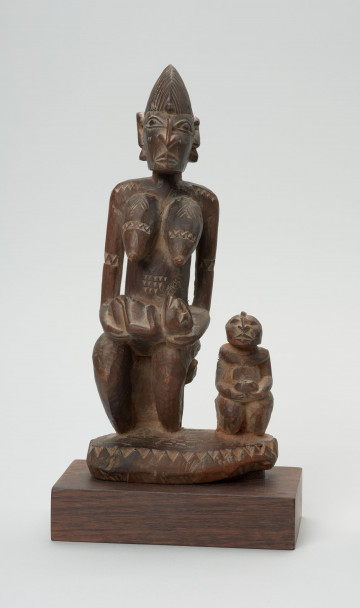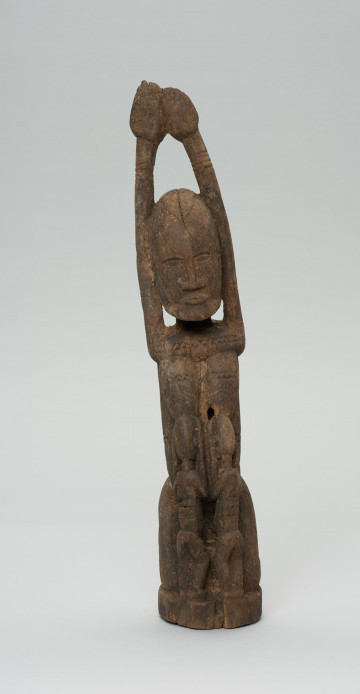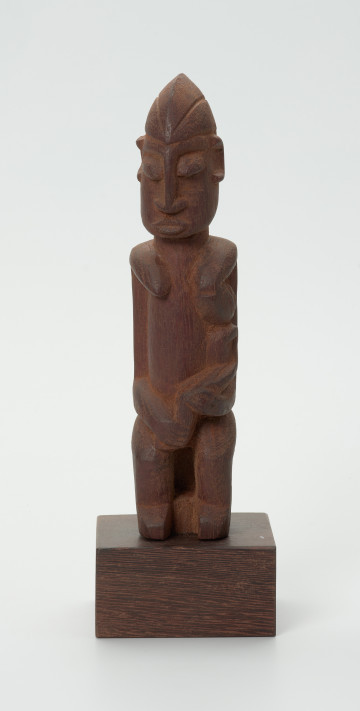
Figure - woman with child
między 1951 — 2000
National Museum in Szczecin
Part of the collection: Collection of Dogonian art
The Dogon knowledge of their religion, mythology and the surrounding world is very extensive and extensive. Only a small group of men can boast of in-depth knowledge. Learning about the world, its laws and one's own culture is always a very long process. Children and young people acquire this knowledge through active participation in household chores, family events and community festivals. This daily teaching is called atemu in the Dogon. It consists of explaining to children the origin of the name, function and meaning of objects used in daily life, of plants and animals, and even of people they pass. A good opportunity to impart and assimilate knowledge is through participation in games and entertainment. Regular teaching is done by ginna bana, who often complement his oral explanations with drawings made in the sand. Learning also takes place through listening to adults telling legends (poro-so), historical stories (so-pei), fairy tales (elume), asking riddles (enwenren), recalling proverbs (tanriyan) and singing songs (nii). Children also acquire knowledge about their own culture by participating in various ceremonies, e.g.: Bulo - a sowing festival held at the end of May and the beginning of June, Bogo - a ceremony celebrating the sacrifice of the first plant and animal products, which takes place in September, or Goru - a harvest festival celebrated at the end of December and the beginning of January. The Dogon atemu requires the co-presence and cooperation of several generations. This kind of culture, in which knowledge is passed on to the younger generation by the older one, was called post-figurative by the American anthropologist Margaret Mead.
Ewa Prądzyńska
Author / creator
Dimensions
cały obiekt: height: 16,5 cm, width: 5,5 cm
Object type
figure
Creation time / dating
Creation / finding place
Identification number
Location / status

między 1951 — 2000
National Museum in Szczecin

między 1951 — 2000
National Museum in Szczecin

między 1951 — 2000
National Museum in Szczecin
DISCOVER this TOPIC
National Museum in Lublin
DISCOVER this PATH
Educational path